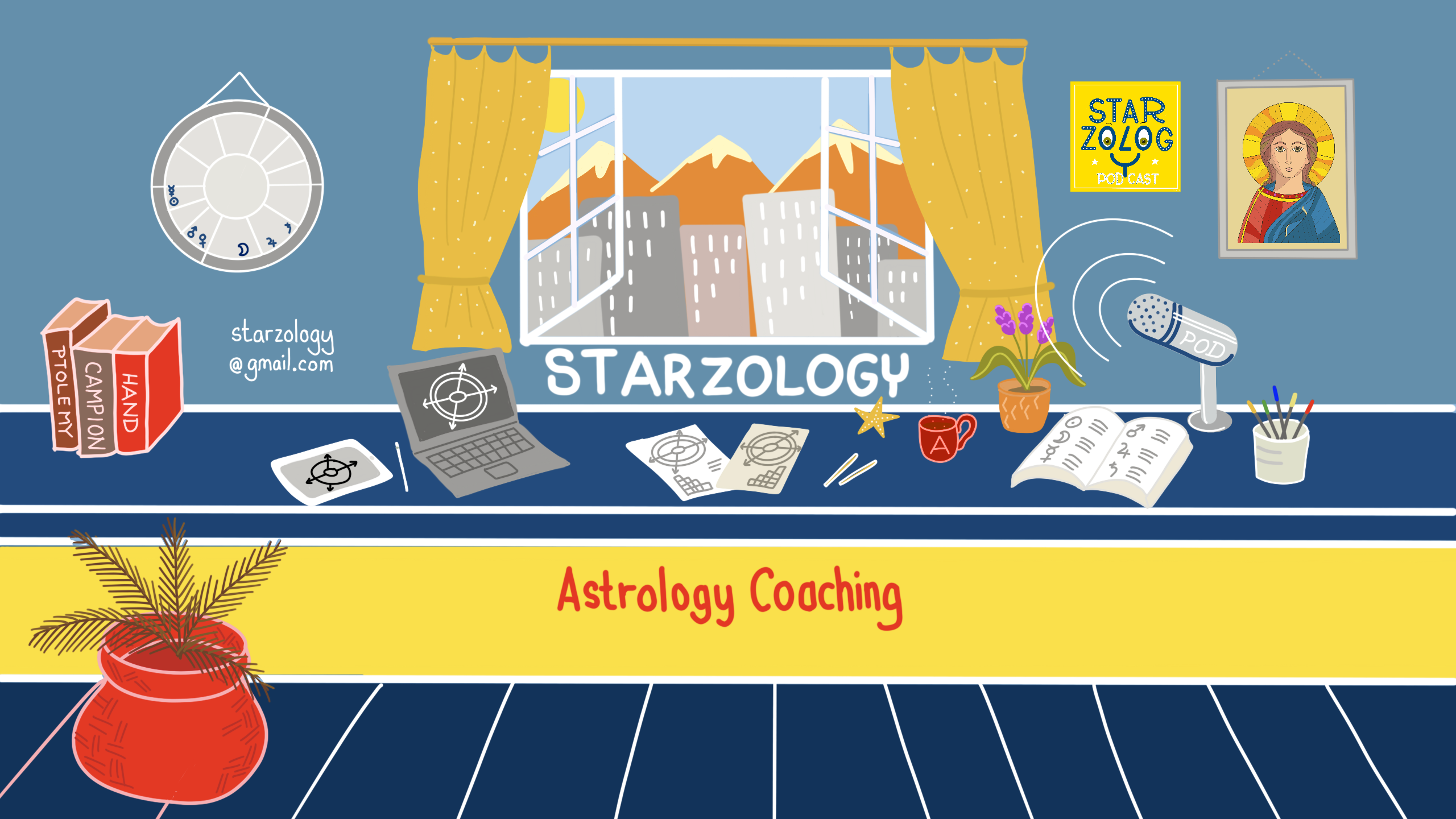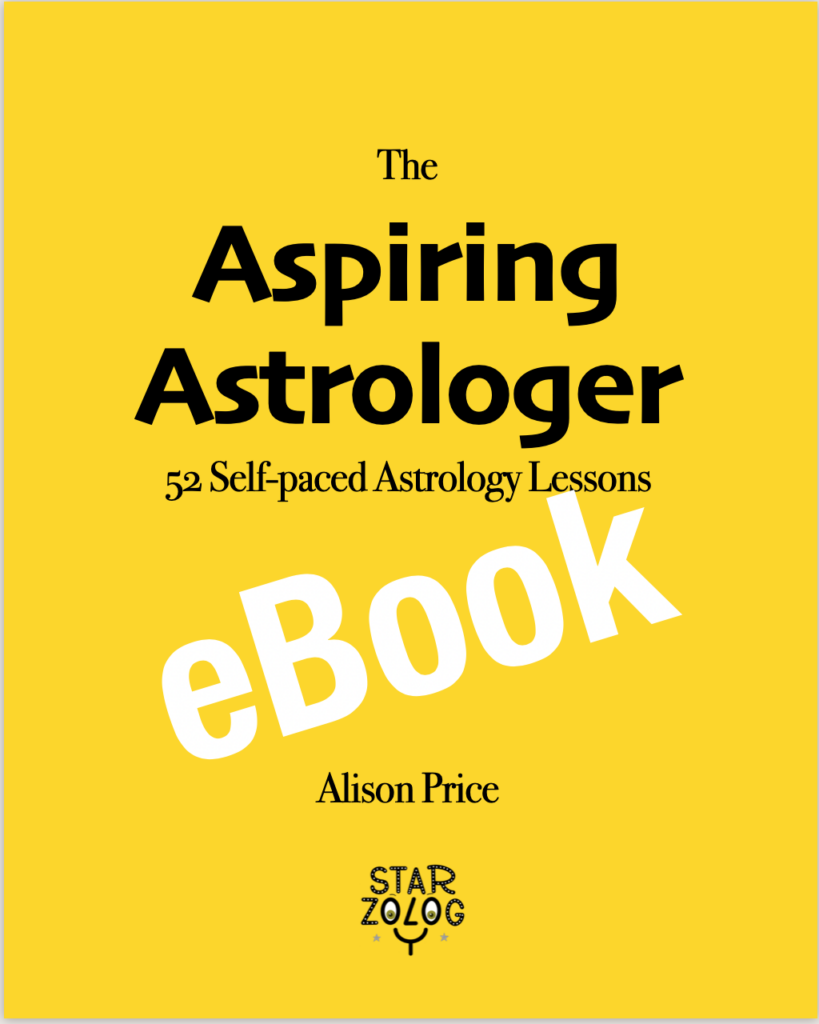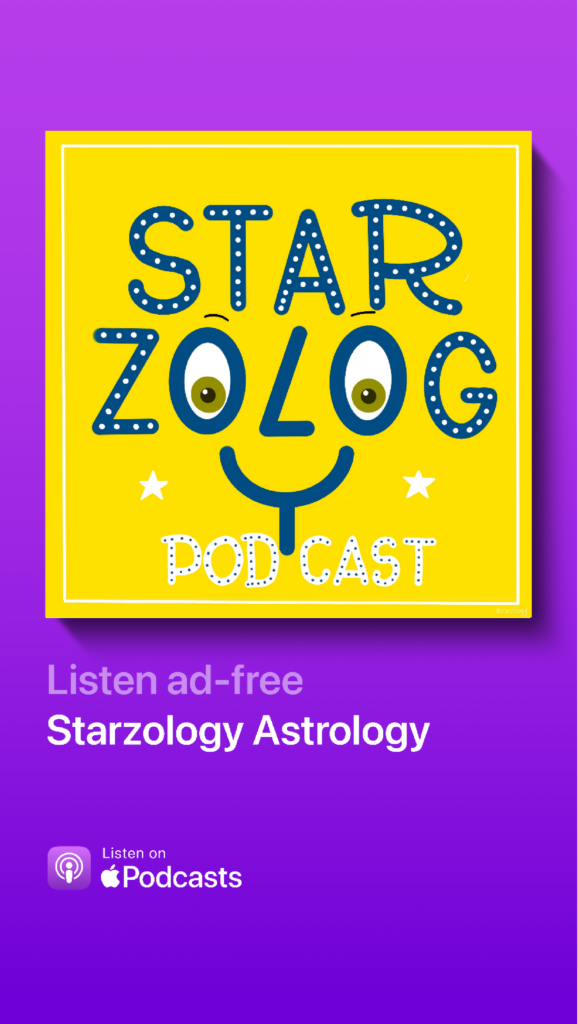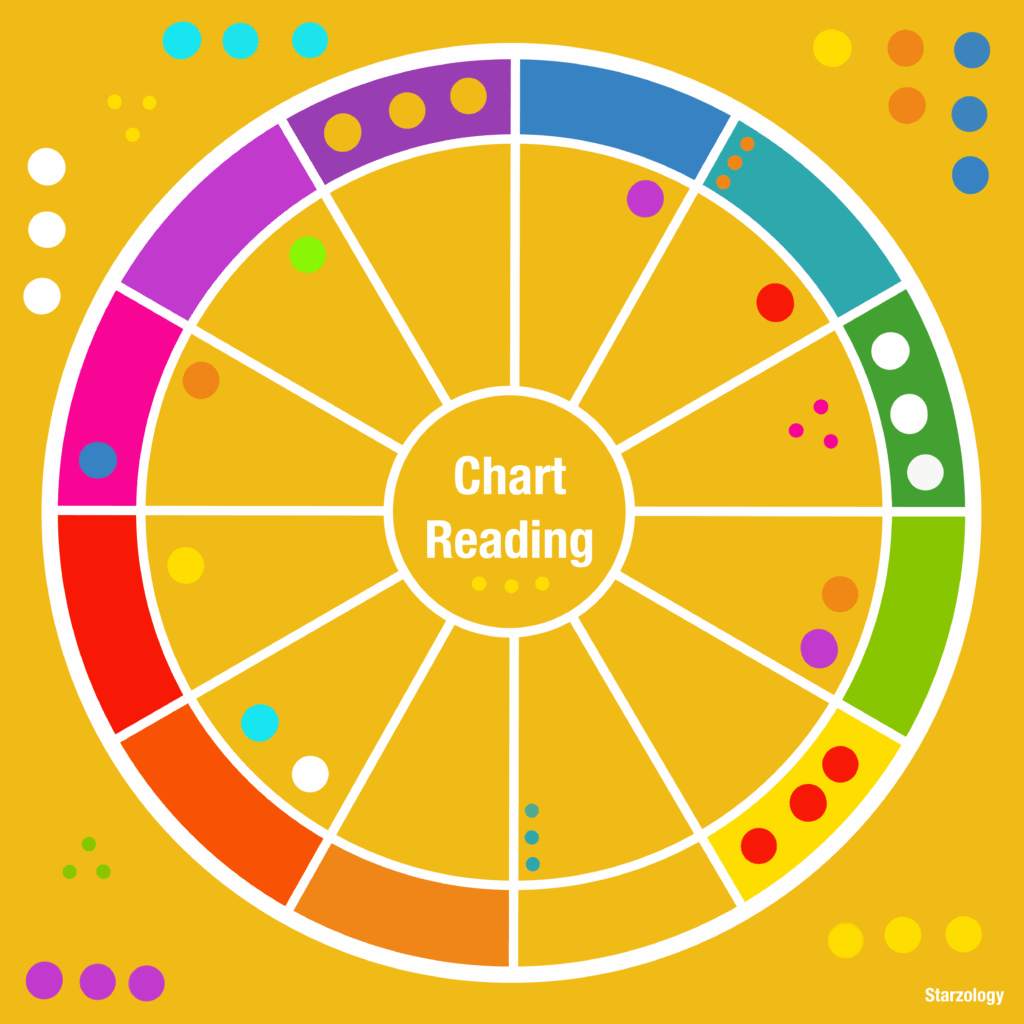The Starzology monthly horoscope overview provides all the ingresses, stations and lunations for each month with a short interpretation.

The Asteroids
Author: Alison Price – Last updated: January 2025
The Asteroids
The asteroids orbit the Sun and they are solar system bodies. They are smaller than the planets and their paths lie mainly between Mars and Jupiter. They are found in what is called “The Asteroid belt” which is a space between the personal planets (Sun to Mars) and the social planets (Jupiter and Saturn). Bode’s Law states that there will be a planet found in the space between Mars and Jupiter. The earlier astronomers looked for it, and that is how Ceres the biggest and was the first asteroid to be discovered.
Podcast Episode
Listen to our Asteroids podcast episode on the link below.
The Big Four Asteroids
The four largest asteroids are Ceres, Juno, Vesta and Pallas Athene. The big four asteroids were discovered first because they are so large, and they could be seen with the early telescopes. These are the main asteroids and they are the ones you will learn about here. In 2006 Ceres, was reclassified as a dwarf planet (just like Pluto) due to its mass. This special status conferred onto Ceres has brought Ceres into many astrologer’s main practices and you will often see it in printed charts.
The Asteroid Belt
The main asteroid belt lies between Mars and Jupiter and contains millions of varying sized objects some as large as the planet Pluto and some the size of a potato. There are three areas where asteroids are found. The main belt is where most of the astrology asteroids lie, and the Greeks and the Trojans which are groups that lie equally before and after on Jupiter’s orbit path at a sextile.

The Asteroids
The asteroids orbit the Sun and they are solar system bodies. They are smaller than the planets and their paths lie mainly between Mars and Jupiter. They are found in what is called “The Asteroid Belt” which is a space between the personal planets (Sun to Mars) and the social planets (Jupiter and Saturn). Bode’s Law states that there will be a planet found in the space between Mars and Jupiter. The earlier astronomers looked for it, and that is how Ceres the biggest and was the first asteroid to be discovered.
Introduction to Asteroids in Astrology
Asteroids have emerged as powerful tools in astrology, offering nuanced insights that complement the traditional planets. These celestial bodies were largely overlooked in astrology until their discovery in the 19th and 20th centuries. With advancements in astronomy and an expanded awareness of their symbolic potential, asteroids have become an integral part of modern astrological interpretation. The most well-known asteroids used in astrology are Ceres, Pallas, Juno and Vesta. These are often referred to as the “Big Four Asteroid Goddesses” and represent archetypal feminine energies. However, there are thousands of named asteroids, each offering unique insights based on its mythology or namesake.
Asteroids Size
Asteroids are typically smaller than planets, with most ranging from a few meters to hundreds of kilometers in diameter. The largest asteroid, Ceres, is about 940 kilometers across and is also classified as a dwarf planet.
Asteroids Composition
Asteroids are primarily composed of rock, metal, and minerals. They are remnants of the early Solar System, leftover building blocks from planet formation.
Asteroids Astrology
In astrology, asteroids like Ceres, Pallas, Juno, and Vesta represent specific archetypal energies. They are often related to personal growth, relationships and nurturing themes. Smaller asteroids are sometimes used to add layers of detail to a natal chart.
Centaurs
Location
Centaurs are a class of small celestial bodies that exist in a transition zone between the outer planets (Jupiter, Saturn, Uranus and Neptune) and the inner Solar System. They typically orbit between Jupiter and Neptune in a region that overlaps the orbits of asteroids and the outer Solar System. Centaurs have unstable orbits that are highly eccentric and often cross the orbits of both the outer planets and the asteroid belt. Their paths can sometimes be affected by the gravitational influence of Jupiter and Saturn, making their orbits more erratic than the relatively stable orbits of asteroids.
Centaurs Size
Centaurs tend to be larger than most asteroids, with diameters ranging from 50 to 200 kilometers. Their size is typically large enough to be classified as small Solar System bodies.
Centaurs Composition
Centaurs are considered icy-rocky bodies, with a mixture of ices (such as water ice, methane, ammonia) and rock. This composition reflects their position in the Solar System, beyond the asteroid belt but not quite in the Kuiper Belt, where the icy bodies are more common.
Centaurs Astrological Meaning
Centaurs, with their mixed qualities of planet and comet, are associated with healing, transformation, and spiritual growth. For example, Chiron, the most famous centaur, represents the Wounded Healer and is often used to explore themes of healing and deep emotional wounds in an individual’s chart.
Trans-Neptunian Objects (TNOs)
Location
TNOs are objects that lie beyond Neptune, mainly in the Kuiper Belt and scattered disk. Some TNOs are further out in the Oort Cloud. These objects orbit at much greater distances from the Sun, past the orbit of Neptune.
Size
TNOs vary greatly in size, from relatively small objects to much larger ones. Many TNOs are dwarf planets, with some, like Pluto, Haumea, and Makemake, reaching diameters of over 1,000 kilometers.
Composition
TNOs are primarily composed of ice, rock, and dust, as they are located in colder regions of the Solar System. They are remnants of the early Solar System, much like asteroids, but contain a larger proportion of volatile materials (like water ice).
Astrology
In astrology, TNOs are seen as symbols of deep, long-term, and transformative energies. They often represent deeper, more collective themes, such as identity, spiritual growth, and transformation over extended periods of time. Pluto, though now classified as a dwarf planet, is one of the most influential bodies in astrology, along with Eris and Haumea.

Asteroids and the Feminine
The Feminine Aspect in Astrology
Asteroids in astrology carry a uniquely feminine energy, as they are predominantly named after goddesses. These celestial bodies provide an essential counterbalance to the male-dominated energy of the traditional planets, such as the Sun, Mars, Saturn, Uranus, Neptune, Pluto and Chiron. By incorporating asteroid influences into a chart, we gain a richer, more nuanced understanding of the feminine archetypes and their roles.
The Female Family in Mythology
The four primary asteroids in astrology are deeply connected to the feminine roles within a mythological family. Each asteroid is named after a significant female figure in the myth of Jupiter (or Zeus in Greek mythology):
- Ceres represents Jupiter’s mother and sister(?), embodying themes of nurturing, caregiving and the cycles of life.
- Vesta, Jupiter’s sister, symbolizes focus, devotion and sacred dedication.
- Juno, Jupiter’s wife, highlights partnerships, loyalty and the dynamics of committed relationships.
- Pallas Athene, Jupiter’s daughter, is associated with wisdom, strategy and creative intelligence.
These asteroids offer a lens through which we can explore the complexities of feminine energy and its interplay with the broader chart dynamics. They enrich our understanding of the roles women play, both mythologically and astrologically, within the fabric of life.

Ceres
Ceres was the first asteroid to be discovered by Giuseppe Piazzi on January 1, 1801 in Palermo, Sicily. Associated with nurturing, motherhood, and abundance, Ceres reflects how we give and receive care.
Ceres Keywords:
- Mother and Earth mother.
- Physical nurturing, food, cooking, nutrition and eating disorders.
- The parent/child relationship, parental kidnapping and custody battles.
- Food production in general.
- The nurturing principle and where and how you feel nurtured.
- Love and comfort.
- Infertility and barrenness.
- Fear of abundance.
- Cereals and the harvest.
Body Parts
Uterus and upper intestine.
Pallas Athene
Discovered in 1802. Linked to wisdom, strategy, and creative intelligence, Pallas represents the balance of logic and intuition.
Pallas Athene Keywords:
- The father/daughter relationship and your relationship with your father.
- Mental nurturing.
- Your ability to weave, see patterns and link ideas.
- Your survival instinct.
- The arts.
- Creative intelligence.
- Intelligence, cerebral.
- Creative intuition and defense.
Body Parts
The kidneys and the immune system.
Juno
Juno is the third asteroid and was discovered in 1804. The asteroid of marriage and commitment, Juno symbolizes partnership dynamics and fidelity.
Juno Keywords:
- Wife, marriage, commitment and your soul mate.
- Beauty, fashion and flowers.
- Relationship renewal and committed partnerships.
- Betrayal, denial, and inequality.
- Wife issues and powerlessness.
Body Parts
Female genitals.
Vesta
Vesta was the fourth asteroid to be discovered in 1807. Vesta is the second largest asteroid after Ceres. Representing devotion and sacred work, Vesta connects us to our inner flame and sense of purpose.
Vesta Keywords:
- Sister, virgin, goddess, chastity, pure, and perfect.
- Keeper of the hearth. Sorority.
- Locks and keys.
- Investments and insurance.
- Self-renewal.
- Dedication, devotion, and self-sacrifice.
- Promiscuity, segregation, apartheid, and denial.
- Fear of intimacy.
Body Parts
The hymen.
Asteroid Names
There are hundreds of asteroids and many of them have names which can be used in chart interpretation. You may discover that there is an asteroid with your name and if so, it may have a special meaning for you in your chart.
Below I explain you how I explored named asteroids for the natal charst for myself and Arwynne.

Asteroid Alice
Name Origin
The name Alison has roots in several linguistic and cultural traditions. Here’s a breakdown of its origins and root meaning:
Germanic Origins
- Alison is derived from the Old French name Aalis, which itself is a diminutive form of Alice.
- Alice originates from the Germanic name Adalheidis, which combines the elements:
- “adal“meaning “noble.”
- “heid“meaning “kind,” “type,” or “sort.”
- Together, the root meaning of Alison is often interpreted as “noble one” or “of noble kind.”
Medieval Popularity
Alison gained popularity in medieval France and later in England, where it became a common name for girls. It was sometimes used as a nickname for “Alice” but eventually evolved into a distinct name.
Modern Interpretations
In modern usage, Alison is associated with qualities of grace, dignity, and nobility, reflecting its historical roots. The name has a timeless elegance and continues to be a popular choice worldwide.
Asteroid Alice
Example: Asteroid Alice 291 is the root of my name Alison. Asteroid Alice is placed at 19°38′ Virgo in my birth chart.
Asteroid Arwynne
Name Origin
The name Arwynne is a variation of the name Arwyn or Arwen, and its roots can be traced to Welsh origins.
- “Ar” means “noble” or “fair.”
- “Wyn” or “Wynn” means “white,” “blessed,” or “fair” in Welsh.
- Combined, the name Arwynne can be interpreted to mean “noble friend”, “blessed fair one”, or “noble and pure.”
Feminine and Masculine Usage
In Welsh tradition, names ending in –wyn are typically masculine, while –wen endings are feminine. The variation Arwynne may have been adapted to have a more distinctly feminine feel.
Tolkien Influence
The name Arwen from J.R.R. Tolkien’s The Lord of the Rings shares similar roots. Tolkien constructed Arwen to mean “noble maiden“ in his Sindarin (Elvish) language, which aligns with its Welsh linguistic heritage.
Tolkien
The root meaning of Arwynne is rooted in nobility, fairness, and purity, reflecting qualities of grace and elegance. Its association with Tolkien’s Elvish naming conventions adds a layer of fantasy and literary charm. Arwen Undómiel is a prominent character in J.R.R. Tolkien’s Middle-earth legendarium. She is an Elven princess, the daughter of Elrond, and known for her exceptional beauty and wisdom. Arwen is also the love interest of Aragorn and chooses to forsake her immortality to be with him. The name “Arwen” comes from Sindarin (a language created by Tolkien), meaning “noble maiden.”
Asteroid Tolkien
Because there is not an asteroid specifically named Arwynne, I’ve chosen the origin which is Tolkien. Example: Asteroid “Tolkien” is at 11°33′ Aquarius in Arwynne’s birth chart.

Book Recommendation
Here are some asteroid books to get you going.
- Asteroid Goddesses by Demetra George.
- The Divine Feminine in Ancient Europe: Goddesses, Sacred Women and the Origins of Western Culture by Sharon Paice McLeod
- Laurentia: A Dictionary of 21000 Asteroid Interpretations for Astrologers by Ajani Abdul-Khaliq
- The Asteroid Ephemeris for 1900 to 2050 by Rique Pottenger
Aspiring Astrologer Activity: Asteroids
In your astrology journal do the following:
- On your birth chart, note the sign and house positions of the big four asteroids Ceres, Juno, Vesta and Pallas Athene.
- List any asteroid conjunctions to other planets.
- Find out if there is an asteroid named after you, and if so, get the position and draw this special asteroid in your chart.
Share on social with hashtag #Starzclass.

This Month’s Horoscope Overview

Uranus in Gemini
In astrology, URANUS moves into GEMINI in 2025, kicking off a seven-year cycle focused on innovation, fresh ideas, and bold new ways of thinking.

This Month’s Horoscope Overview
The Starzology monthly horoscope overview provides all the ingresses, stations and lunations for each month with a short interpretation.

Pluto Aspects
In astrology, PLUTO and his aspects can indicate where serious transformations will occur in your life.Make sure to explore this planet.

Pluto Aspects
In astrology, PLUTO and his aspects can indicate where serious transformations will occur in your life.Make sure to explore this planet.




